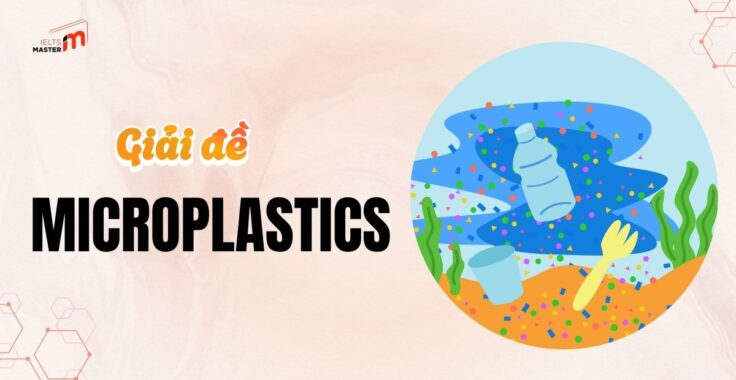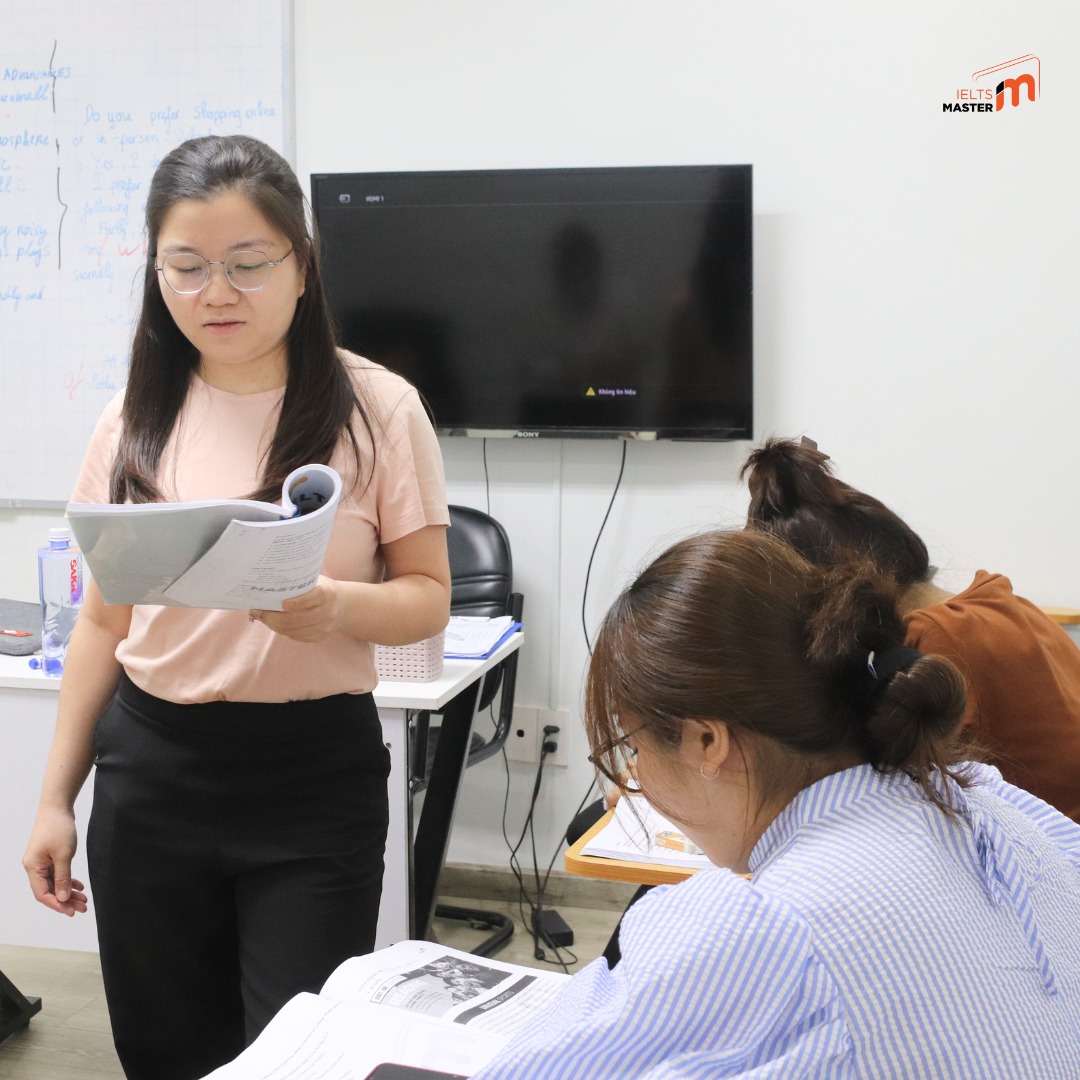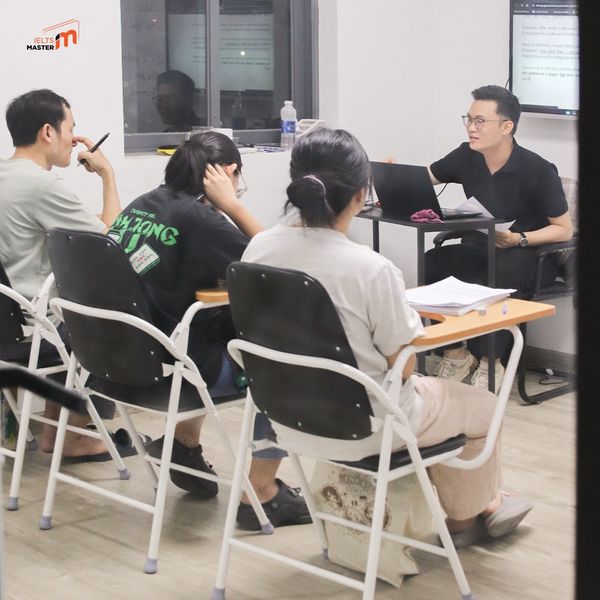
Giải đề Cambridge 19 Test 3: Đáp án Microplastics
Cambridge IELTS 19 Test 3 – Microplastics là bài nghe Section 4, xoay quanh tác động của vi nhựa đối với môi trường, động vật và con người. Bài viết IELTS Master này cung cấp đáp án chi tiết kèm transcript, giúp bạn luyện kỹ năng nghe, ghi chú và hoàn thành dạng Note Completion hiệu quả.
Questions 31–40
Complete the notes below.
Write ONE WORD ONLY for each answer.
Microplastics
Where microplastics come from
● fibres from some 31…………………. during washing
● the breakdown of large pieces of plastic
● waste from industry
● the action of vehicle tyres on roads
Effects of microplastics
● They cause injuries to the 32…………………. of wildlife and affect their digestive systems.
● They enter the food chain, e.g., in bottled and tap water, 33…………………. and seafood.
● They may not affect human health, but they are already banned in skin cleaning products and 34…………………. in some countries.
● Microplastics enter the soil through the air, rain and 35…………………. .
Microplastics in the soil – a study by Anglia Ruskin University
● Earthworms are important because they add 36…………………. to the soil.
● The study aimed to find whether microplastics in earthworms affect the 37…………………. of plants.
● The study found that microplastics caused:
– 38…………………. loss in earthworms
– fewer seeds to germinate
– a rise in the level of 39…………………. in the soil.
The study concluded:
– soil should be seen as an important natural process.
– changes to soil damage both ecosystems and 40………………….

TRANSCRIPT
In today’s lecture, I’m going to be talking about microplastics.
Microplastics are tiny pieces of plastic smaller than five millimetres in size. Recently there’s been a greater awareness that there are large quantities of plastic waste – big and small – in the environment. The amount of plastic waste in the oceans has received widespread attention, but far less is known about the effects of microplastics in freshwater and particularly in soil.
Microplastics can enter the environment via a number of different sources. Threads and microfibres detach from synthetic clothing every time they’re put in a washing machine, and these find their way into the water system. Other sources include big pieces of plastic waste that are already in the environment, and these break down into microscopic particles over a period of time. On a larger scale, factory waste is another route, as are tyres which wear down as cars, lorries and so on travel along road surfaces.
We already understand some of the impacts of microplastics from studies involving fish and other animals. There is evidence that microplastics harm small creatures in a variety of ways, such as by damaging their mouths, or by impairing their ability to feed, for example when microplastics get lodged in their digestive system.
Surprisingly perhaps, it is likely that humans consume microplastics, as these have been detected in a wide range of food and drink products, including bottled water, as well as in water that comes direct from the tap. What’s more, salt and many kinds of seafood have also been found to contain microplastics.
However, it’s important to underline that there is not yet conclusive proof that microplastics cause significant harm to people. In many countries, including here in the UK, there is legislation which prevents manufacturers from adding plastic microbeads to shower gels, facial cleansers and toothpaste.
It is very difficult to accurately estimate the total amount of microplastic particles in the soil as they can be hard to detect, but we do know they are carried in the air and deposited in the soil by rain. What’s more, many of the fertilisers used by both farmers and gardeners contain microplastics.
A team from the Anglia Ruskin University in Cambridge has carried out a study of the effects of microplastics on the digestive tracts of earthworms. These worms, which live in topsoil, are an essential component of our agricultural system. By feeding on soil, they mix nutrients into it, thereby making it more fertile.
The researchers set out to discover whether the introduction of microplastics into the soil – and the subsequent ingestion of these by earthworms – would impact soil quality and ultimately inhibit plant growth. The short answer was, yes, it did. After placing three different types of microplastic particles into the soil, they planted perennial rye grass. The particles of microplastic, which included biodegradable PLA and conventional high-density polyethylene, or HDPE, were then ingested by the earthworms in the soil. The result was that the worms lost weight rapidly. What’s more, a lower percentage than normal of the rye grass seeds germinated, and the researchers concluded that this was a direct result of the earthworms being unable to fulfil their normal role in making soil more fertile. The team also discovered that there was an increase in the amount of acid found in the soil, and this was attributed mainly to the microplastic particles from conventional HDPE plastic.
The conclusions of the study make for very interesting reading – I’ve included the reference in the notes to give you at the end of this session. To summarise, the authors propose the idea that we need to regard soil as we would regard any other process in nature. This means we should accept the implications of soil being dependent on decaying and dead matter constantly being passed through the bodies of earthworms. That is, when soil becomes impoverished by the presence of microplastics, not only ecosystems but also the whole of society are negatively impacted.

Giải đề Cambridge 19 Test 3: Đáp án Microplastics
| 31 | clothing |
| 32 | mouths |
| 33 | salt |
| 34 | toothpaste |
| 35 | fertilizers |
| 36 | nutrients |
| 37 | growth |
| 38 | weight |
| 39 | acid |
| 40 | society |
TRUNG TÂM LUYỆN THI IELTS MASTER
IELTS Master là trung tâm luyện thi IELTS hàng đầu tại Bình Dương, nổi bật với lộ trình học tập cá nhân hóa và đội ngũ giảng viên giàu kinh nghiệm. Chúng tôi cam kết giúp học viên đạt được mục tiêu điểm số IELTS thông qua phương pháp giảng dạy hiệu quả, các buổi thi thử định kỳ và sự hỗ trợ tận tâm. Với cơ sở vật chất hiện đại và môi trường học tập chuyên nghiệp, IELTS Master không chỉ mang đến kiến thức mà còn tạo động lực để bạn tự tin chinh phục mọi thử thách trong hành trình học tập và sự nghiệp. Hãy đến và trải nghiệm sự khác biệt tại IELTS Master!

📍 Thông tin liên hệ:
Địa chỉ:
- CN1: 105 đường D, khu dân cư Chánh Nghĩa, Thủ Dầu Một, Bình Dương
- CN2: 205/1 Bùi Thị Xuân, Tân Phú 2, Tân Bình, TP. Dĩ An (gần chợ Tân Bình)
- CN3: Nhà Thiếu nhi TP. Dĩ An, 122 Nguyễn Hữu Cảnh, Đông Hòa (đối diện THCS Đông Hòa)
- CN4: Trung tâm văn hóa phường Tân Bình
- CN5: 400 Nguyễn An Ninh, Dĩ An
Hotline: 0868 234 610
Website: https://ieltsmastervn.edu.vn/
Facebook: https://www.facebook.com/ieltsmasterbinhduong
>> Xem thêm: Thành tích học viên của IELTS Master





